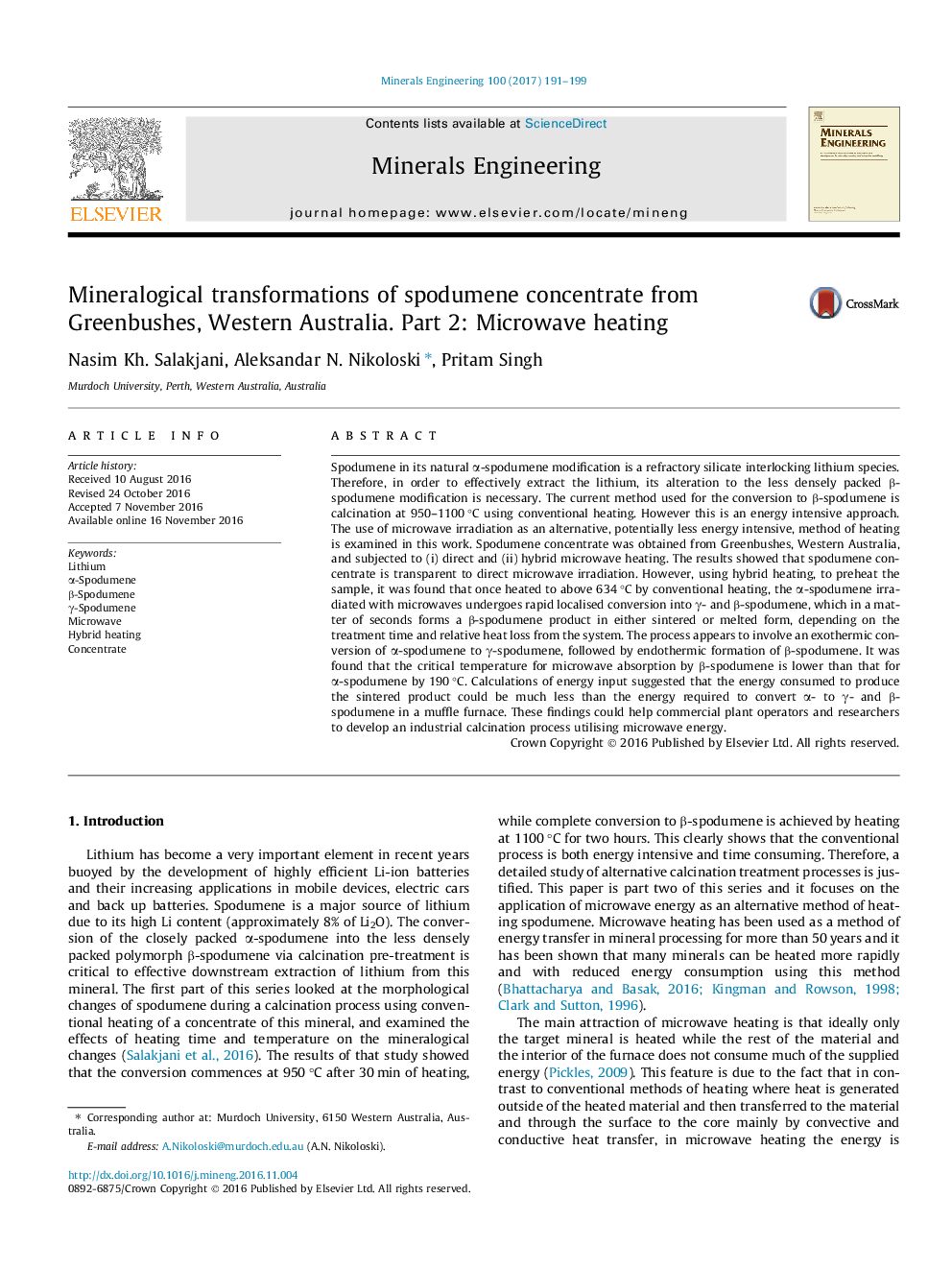| Article ID | Journal | Published Year | Pages | File Type |
|---|---|---|---|---|
| 4910294 | Minerals Engineering | 2017 | 9 Pages |
Abstract
Spodumene in its natural α-spodumene modification is a refractory silicate interlocking lithium species. Therefore, in order to effectively extract the lithium, its alteration to the less densely packed β-spodumene modification is necessary. The current method used for the conversion to β-spodumene is calcination at 950-1100 °C using conventional heating. However this is an energy intensive approach. The use of microwave irradiation as an alternative, potentially less energy intensive, method of heating is examined in this work. Spodumene concentrate was obtained from Greenbushes, Western Australia, and subjected to (i) direct and (ii) hybrid microwave heating. The results showed that spodumene concentrate is transparent to direct microwave irradiation. However, using hybrid heating, to preheat the sample, it was found that once heated to above 634 °C by conventional heating, the α-spodumene irradiated with microwaves undergoes rapid localised conversion into γ- and β-spodumene, which in a matter of seconds forms a β-spodumene product in either sintered or melted form, depending on the treatment time and relative heat loss from the system. The process appears to involve an exothermic conversion of α-spodumene to γ-spodumene, followed by endothermic formation of β-spodumene. It was found that the critical temperature for microwave absorption by β-spodumene is lower than that for α-spodumene by 190 °C. Calculations of energy input suggested that the energy consumed to produce the sintered product could be much less than the energy required to convert α- to γ- and β-spodumene in a muffle furnace. These findings could help commercial plant operators and researchers to develop an industrial calcination process utilising microwave energy.
Related Topics
Physical Sciences and Engineering
Chemical Engineering
Chemical Engineering (General)
Authors
Nasim Kh. Salakjani, Aleksandar N. Nikoloski, Pritam Singh,
